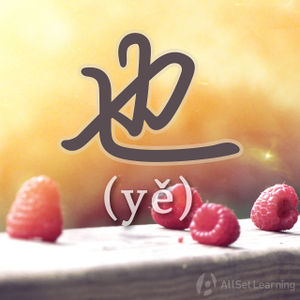Difference between revisions of "Using "ye" and "dou" together"
| Line 2: | Line 2: | ||
Sometimes you want to say that a group of people have something in common with something else. If this is the case you'll want to use 也 (yě) and 都 (dōu) at the same time. Put 也 first! | Sometimes you want to say that a group of people have something in common with something else. If this is the case you'll want to use 也 (yě) and 都 (dōu) at the same time. Put 也 first! | ||
| − | ==Structure== | + | == Structure == |
If you're using 也 and 都 in the same sentence, put 也 first: | If you're using 也 and 都 in the same sentence, put 也 first: | ||
| Line 8: | Line 8: | ||
<div class="jiegou"> | <div class="jiegou"> | ||
| − | Subject + 也 + 都 + Verb | + | Subject + 也 + 都 + Verb / Adj. |
</div> | </div> | ||
| − | + | == Examples == | |
<div class="liju"> | <div class="liju"> | ||
| Line 19: | Line 19: | ||
* 我们 <em>也 都</em> 喜欢 喝 啤酒。<span class="trans">We also all like to drink beer.</span> | * 我们 <em>也 都</em> 喜欢 喝 啤酒。<span class="trans">We also all like to drink beer.</span> | ||
* 你们 <em>也 都</em> 是 学生 吗?<span class="trans">Are you all students too?</span> | * 你们 <em>也 都</em> 是 学生 吗?<span class="trans">Are you all students too?</span> | ||
| + | * 这些 <em>也 都</em> 是 你 做 的?<span class="trans"></span> | ||
| + | * 他们 <em>也 都</em> 是 来 帮忙 的。<span class="trans"></span> | ||
| + | * 这 个 酒吧 里 <em>也 都</em> 是 年轻 人。<span class="trans"></span> | ||
| + | * 我们 喜欢 来 这里,孩子 们 <em>也 都</em> 喜欢 来 这里。<span class="trans"></span> | ||
| + | * 老板 经常 加班,你们 <em>也 都</em> 加班 吗?<span class="trans"></span> | ||
| + | * 他们 是 你 的 朋友,他们 <em>也 都</em> 是 我 的 朋友。<span class="trans"></span> | ||
| + | * 北京 的 房子 很 贵,别 的 大 城市 的 房子 <em>也 都</em> 很 贵。<span class="trans"></span> | ||
| + | * 这里 的 同事 <em>也 都</em> 很 好。<span class="trans"></span> | ||
| + | * 她 的 妹妹 们 <em>也 都</em> 很 漂亮。<span class="trans"></span> | ||
| + | * 这 家 店 的 面包 不 错,别 的 点心 <em>也 都</em> 很 好吃。<span class="trans"></span> | ||
</div> | </div> | ||
| − | == | + | ==See also== |
| − | |||
| − | |||
| − | |||
| − | |||
| − | |||
| − | |||
| − | |||
| − | |||
| − | |||
| − | |||
| − | |||
| − | |||
| − | |||
| − | |||
| − | |||
| − | |||
| − | |||
| − | |||
| − | |||
| − | |||
| − | |||
| − | |||
| − | |||
| − | |||
*[[The all adverb]] | *[[The all adverb]] | ||
*[[The also adverb]] | *[[The also adverb]] | ||
Revision as of 03:52, 11 September 2013
-
Level
-
Similar to
-
Used for
-
Keywords
Sometimes you want to say that a group of people have something in common with something else. If this is the case you'll want to use 也 (yě) and 都 (dōu) at the same time. Put 也 first!
Structure
If you're using 也 and 都 in the same sentence, put 也 first:
Subject + 也 + 都 + Verb / Adj.
Examples
- 他们 也 都 是 法国 人。They are also all French people.
- 我们 也 都 喜欢 喝 啤酒。We also all like to drink beer.
- 你们 也 都 是 学生 吗?Are you all students too?
- 这些 也 都 是 你 做 的?
- 他们 也 都 是 来 帮忙 的。
- 这 个 酒吧 里 也 都 是 年轻 人。
- 我们 喜欢 来 这里,孩子 们 也 都 喜欢 来 这里。
- 老板 经常 加班,你们 也 都 加班 吗?
- 他们 是 你 的 朋友,他们 也 都 是 我 的 朋友。
- 北京 的 房子 很 贵,别 的 大 城市 的 房子 也 都 很 贵。
- 这里 的 同事 也 都 很 好。
- 她 的 妹妹 们 也 都 很 漂亮。
- 这 家 店 的 面包 不 错,别 的 点心 也 都 很 好吃。



